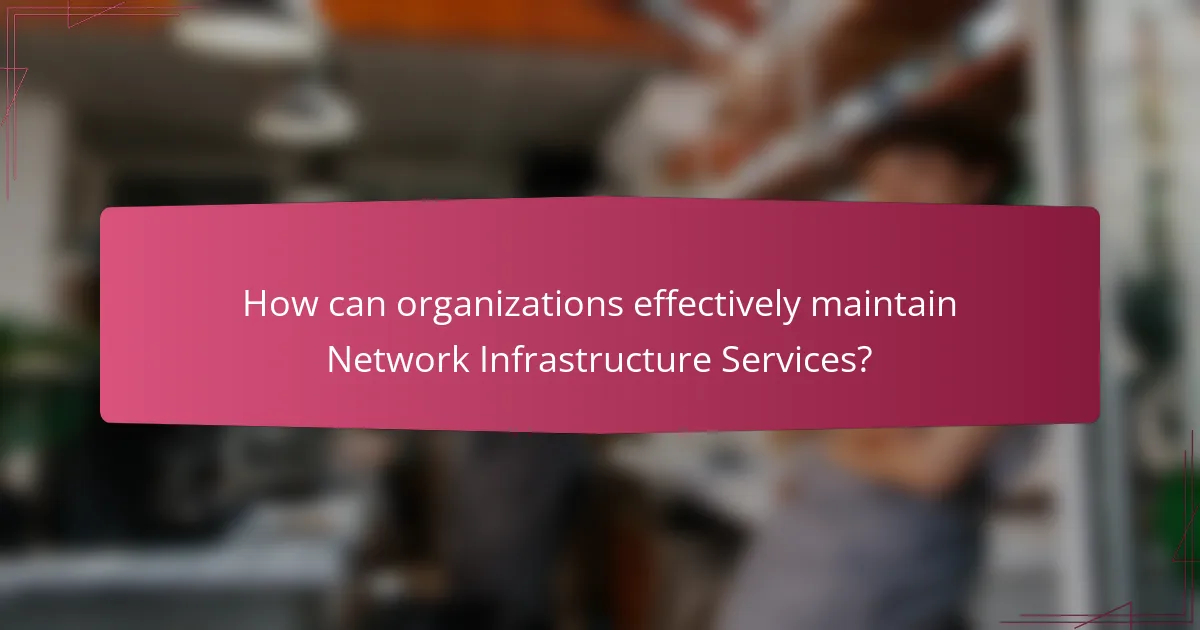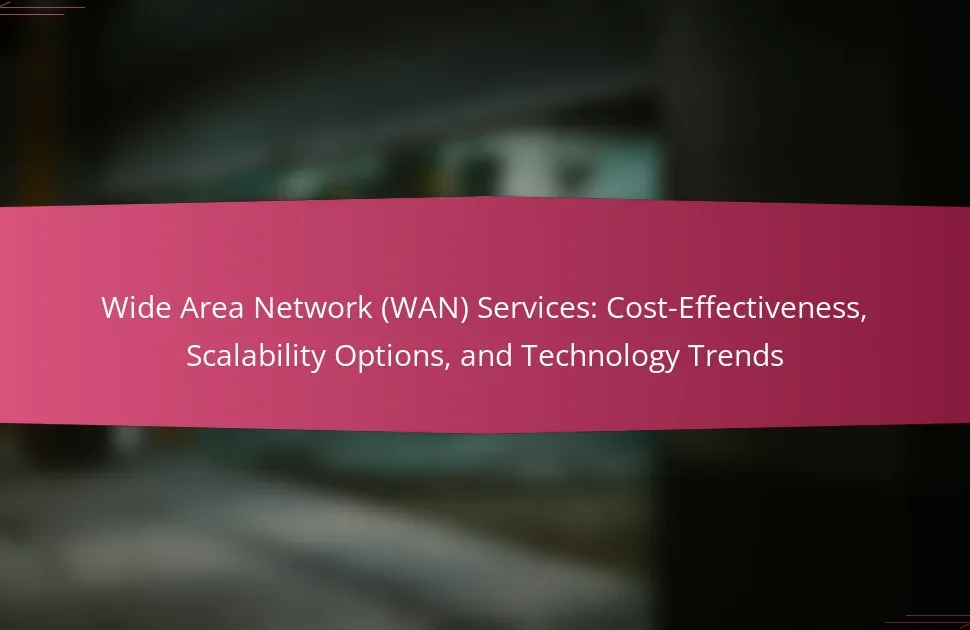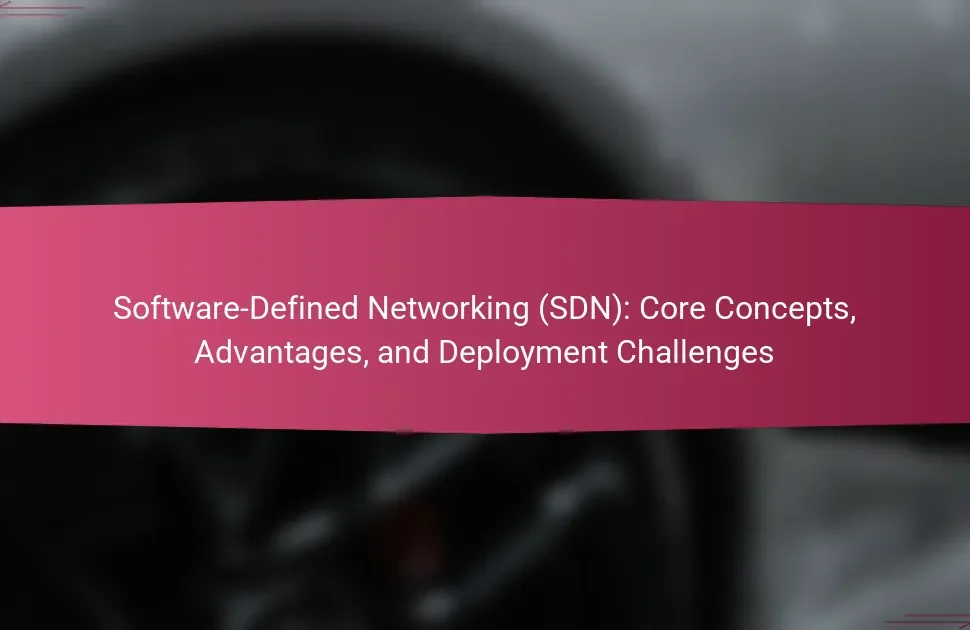
What are Network Infrastructure Services?
Network Infrastructure Services refer to the essential services that support network operations and management. These services include data transmission, connectivity, and network security. They ensure reliable communication between devices and facilitate access to resources. Examples include routing, switching, and firewall services. These components work together to create a stable network environment. Network Infrastructure Services are crucial for both local and wide area networks. They enhance performance and support scalability. Efficient network infrastructure is vital for business continuity and operational efficiency.
How do Network Infrastructure Services function?
Network Infrastructure Services function by providing the essential framework for data communication. They enable connectivity between devices and networks, facilitating data transfer and communication. These services include routing, switching, and security management. Routing directs data packets to their destination through the most efficient path. Switching connects devices within a local network, allowing them to communicate effectively. Security management protects data integrity and network access. Together, these components ensure reliable and efficient network performance. According to Cisco, effective network infrastructure is critical for optimizing business operations and enhancing user experience.
What are the key components of Network Infrastructure Services?
The key components of Network Infrastructure Services include hardware, software, and services. Hardware components consist of routers, switches, firewalls, and servers. These devices facilitate data transmission and network security. Software components include network operating systems and management tools. They enable configuration, monitoring, and maintenance of the network. Services encompass network connectivity, cloud services, and security protocols. These services ensure reliable and secure communication. Together, these components form a cohesive network infrastructure that supports organizational operations.
How do these components interact within the network?
Components within a network interact through data transmission protocols and routing mechanisms. Each component, such as switches, routers, and servers, communicates using established protocols like TCP/IP. Routers direct data packets to their destination by analyzing IP addresses. Switches connect devices within a local area network, facilitating direct communication. Servers provide resources and services to clients, responding to requests over the network. These interactions create a cohesive network environment, ensuring data flows efficiently. The effectiveness of these interactions is critical for network performance and reliability.
What are the primary benefits of Network Infrastructure Services?
Network Infrastructure Services provide enhanced connectivity and communication. They enable seamless data transfer across networks. These services improve operational efficiency by reducing downtime. They also support scalability, allowing businesses to grow without major disruptions. Security is another key benefit, protecting sensitive data from breaches. Cost-effectiveness is achieved through optimized resource utilization. Overall, Network Infrastructure Services facilitate better collaboration among teams. These advantages lead to improved customer satisfaction and business performance.
How do Network Infrastructure Services enhance operational efficiency?
Network Infrastructure Services enhance operational efficiency by providing reliable connectivity and optimized data flow. They streamline communication between devices, which reduces latency and downtime. Enhanced network performance leads to faster data access and processing. This efficiency allows businesses to respond quickly to market demands. Additionally, these services support scalability, enabling organizations to expand their operations seamlessly. They also improve resource allocation by ensuring that bandwidth is used effectively. According to a study by Gartner, organizations that optimize their network infrastructure can see productivity gains of up to 30%.
What cost savings can be achieved through effective Network Infrastructure Services?
Effective Network Infrastructure Services can achieve significant cost savings through optimized resource utilization and reduced operational expenses. By implementing efficient network designs, organizations can minimize hardware and software costs. Streamlined network management reduces the need for extensive IT support, leading to lower labor costs.
According to a study by Cisco, organizations can save up to 30% on operational costs by adopting cloud-based network solutions. Additionally, effective network infrastructure can enhance productivity, reducing downtime and associated costs. Improved performance and reliability also decrease the likelihood of costly outages.
Overall, the strategic implementation of network infrastructure services directly contributes to substantial financial savings for businesses.
What design considerations are critical for Network Infrastructure Services?
Critical design considerations for Network Infrastructure Services include scalability, reliability, and security. Scalability ensures that the network can accommodate growth in users and devices. Reliability focuses on minimizing downtime and ensuring consistent performance. Security involves protecting data and resources from unauthorized access and cyber threats. Additional factors include redundancy, which provides backup systems to maintain service continuity. Performance optimization is also vital, ensuring efficient data flow and minimal latency. Lastly, compliance with regulatory standards is necessary to meet legal requirements and industry best practices. These considerations are essential for creating robust and efficient network infrastructure.
How does scalability impact the design of Network Infrastructure Services?
Scalability significantly influences the design of Network Infrastructure Services. It ensures that the network can grow and adapt to increasing demands without compromising performance. A scalable design allows for the addition of resources, such as bandwidth and server capacity, as user needs expand. This flexibility is crucial for organizations experiencing fluctuating workloads or rapid growth.
For instance, a study by Cisco indicates that scalable networks can handle up to 50% more traffic without degradation. Additionally, scalability facilitates better resource allocation and management. It allows for the seamless integration of new technologies and services, ensuring longevity and relevance in a rapidly evolving landscape. Thus, scalability is a foundational aspect that shapes the architecture and operational strategies of Network Infrastructure Services.
What role does security play in the design of Network Infrastructure Services?
Security is a critical component in the design of Network Infrastructure Services. It ensures the confidentiality, integrity, and availability of data transmitted across networks. Security measures help protect against unauthorized access, data breaches, and cyber threats. Implementing firewalls, intrusion detection systems, and encryption protocols are common practices. These measures create a layered defense that mitigates risks. According to a 2021 Cybersecurity Report by Cybersecurity Ventures, global cybercrime costs are projected to reach $10.5 trillion annually by 2025. This statistic underscores the necessity of robust security in network design. Overall, security influences design choices, resource allocation, and technology integration within network infrastructure.

How can organizations effectively maintain Network Infrastructure Services?
Organizations can effectively maintain Network Infrastructure Services by implementing regular monitoring and updates. Continuous network monitoring identifies issues before they escalate. Utilizing automated tools can streamline this process. Regular software and hardware updates enhance security and performance. Conducting routine audits ensures compliance with standards. Training staff on best practices improves overall network management. Establishing a clear incident response plan minimizes downtime during outages. These strategies collectively enhance the reliability of network infrastructure services.
What are the best practices for maintaining Network Infrastructure Services?
Regular monitoring of network performance is essential for maintaining Network Infrastructure Services. Continuous assessment helps identify issues before they escalate. Implementing automated alerts can enhance response times to potential problems. Routine updates of hardware and software are necessary to ensure security and efficiency. Establishing a comprehensive backup strategy protects data and minimizes downtime. Documenting network configurations aids in troubleshooting and future upgrades. Training staff on best practices enhances overall network management. Conducting periodic audits ensures compliance with industry standards and identifies areas for improvement.
How often should Network Infrastructure Services be evaluated and updated?
Network Infrastructure Services should be evaluated and updated at least annually. Regular evaluations ensure that the infrastructure meets current business needs. Updates should also occur whenever significant changes in technology or business operations arise. For example, new security threats may necessitate immediate updates. Additionally, performance metrics should be reviewed quarterly to identify any potential issues. This systematic approach helps maintain optimal performance and security. Frequent assessments can prevent costly downtimes and enhance overall efficiency.
What tools can assist in the maintenance of Network Infrastructure Services?
Network Infrastructure Services can be maintained using various tools. Network monitoring tools like SolarWinds and Nagios help track performance and detect issues. Configuration management tools such as Ansible and Puppet automate network device configurations. Network performance analyzers like Wireshark provide insights into traffic flow and bottlenecks. Backup solutions like Veeam ensure data integrity and recovery. Security tools such as Cisco ASA and Fortinet protect against threats. These tools collectively enhance the reliability and efficiency of network infrastructure services.
What common challenges do organizations face in maintaining Network Infrastructure Services?
Organizations face several common challenges in maintaining Network Infrastructure Services. These challenges include network downtime, which can disrupt business operations. Additionally, security vulnerabilities pose a significant threat, as cyberattacks can compromise sensitive data. Another challenge is the complexity of network management, which requires skilled personnel to ensure optimal performance. Furthermore, outdated hardware and software can lead to inefficiencies and increased maintenance costs. Budget constraints often limit organizations’ ability to upgrade infrastructure. Lastly, ensuring compliance with regulations can complicate maintenance efforts. These factors collectively hinder the effective management of network infrastructure services.
How can organizations address downtime in Network Infrastructure Services?
Organizations can address downtime in Network Infrastructure Services by implementing redundancy and failover systems. Redundant systems ensure that backup components take over during failures. This minimizes service interruption and maintains network availability. Regularly scheduled maintenance is essential to identify potential issues before they lead to downtime. Monitoring tools can provide real-time insights into network performance. These tools help in quickly diagnosing and resolving problems. Training staff on incident response can also reduce downtime. Prepared teams can act swiftly to restore services. By following these strategies, organizations can significantly mitigate the impact of downtime.
What strategies can be employed to troubleshoot issues in Network Infrastructure Services?
Employing systematic strategies is essential to troubleshoot issues in Network Infrastructure Services. Start by conducting a thorough assessment of the network topology. This helps identify potential points of failure. Next, utilize network monitoring tools to analyze traffic patterns and pinpoint anomalies. These tools can provide real-time data on network performance. Additionally, implement a structured approach to isolate problems. This may involve segmenting the network to narrow down the source of the issue.
Documentation of configurations and changes is crucial. It allows for a clearer understanding of the network’s state over time. Regular updates and patches to network devices can prevent known vulnerabilities from causing issues. Lastly, engage in collaborative troubleshooting with team members. Sharing insights can lead to quicker resolution of complex problems.

What future trends should organizations consider for Network Infrastructure Services?
Organizations should consider the integration of artificial intelligence and machine learning in network infrastructure services. These technologies enhance network management through automation and predictive analytics. For instance, AI can optimize traffic routing and detect anomalies in real-time. Additionally, the shift towards cloud-native architectures is a significant trend. This approach allows for greater scalability and flexibility in network services. Moreover, the adoption of 5G technology is transforming connectivity options. It enables faster data transfer and supports a higher number of connected devices. Lastly, organizations should prioritize cybersecurity measures as threats evolve. Implementing advanced security protocols is essential to protect sensitive data and maintain network integrity.
How is technology evolving within Network Infrastructure Services?
Technology is evolving within Network Infrastructure Services through advancements in automation, virtualization, and cloud integration. Automation tools enhance network management efficiency. They reduce human error and streamline operations. Virtualization allows multiple virtual networks to run on a single physical infrastructure. This leads to better resource utilization and flexibility. Cloud integration enables scalable and on-demand network services. It supports remote access and enhances business continuity. According to a 2022 report by Gartner, 80% of organizations will adopt cloud-managed networking by 2025. This trend reflects the growing demand for agile and efficient network solutions.
What role does automation play in the future of Network Infrastructure Services?
Automation is crucial for the future of Network Infrastructure Services. It enhances efficiency by streamlining network management tasks. Automation reduces human error, resulting in more reliable network performance. It enables rapid deployment of network resources, allowing for scalability. Automation also facilitates real-time monitoring and troubleshooting of network issues. According to a 2022 report by Gartner, organizations that implement automation in network management can reduce operational costs by up to 30%. This trend is essential for adapting to increasing network complexity and demands.
How can organizations prepare for advancements in Network Infrastructure Services?
Organizations can prepare for advancements in Network Infrastructure Services by investing in scalable technology solutions. They should adopt cloud-based services to enhance flexibility and efficiency. Regular training for IT staff on emerging technologies is essential. Organizations must also implement robust cybersecurity measures to protect infrastructure. Upgrading existing hardware and software ensures compatibility with new advancements. Conducting regular assessments of network performance can identify areas for improvement. Collaborating with technology partners can provide insights into future trends. Finally, staying informed about industry standards and best practices is crucial for ongoing adaptation.
What practical tips can enhance the effectiveness of Network Infrastructure Services?
To enhance the effectiveness of Network Infrastructure Services, implement regular monitoring and maintenance practices. Continuous monitoring allows for the early detection of issues, minimizing downtime. Use automated tools for real-time analysis and reporting. This approach enables quick responses to potential problems. Additionally, ensure robust security measures are in place. A secure network infrastructure protects against unauthorized access and data breaches. Regularly update hardware and software to maintain optimal performance. Outdated components can lead to inefficiencies and vulnerabilities. Lastly, invest in staff training. Well-trained personnel can effectively manage and troubleshoot network issues, enhancing overall service quality.
How can regular training improve the management of Network Infrastructure Services?
Regular training enhances the management of Network Infrastructure Services by increasing staff expertise. Improved knowledge leads to better troubleshooting and problem resolution. Employees become familiar with the latest technologies and best practices. This reduces downtime and improves service reliability. Regular training also fosters teamwork and communication among staff. Enhanced collaboration leads to more efficient project execution. Furthermore, trained personnel can better adapt to new tools and systems. This adaptability ensures that the infrastructure remains robust and scalable. Overall, consistent training aligns staff capabilities with organizational goals.
What key metrics should organizations monitor for optimal performance of Network Infrastructure Services?
Organizations should monitor key metrics such as bandwidth utilization, latency, packet loss, and jitter for optimal performance of Network Infrastructure Services. Bandwidth utilization measures the amount of network capacity being used. High utilization can indicate congestion, impacting performance. Latency measures the time it takes for data to travel across the network. Lower latency is crucial for real-time applications. Packet loss refers to the percentage of packets that do not reach their destination. High packet loss can significantly degrade service quality. Jitter measures the variability in packet arrival times. Consistent jitter is important for maintaining smooth communication. Monitoring these metrics helps organizations identify issues and optimize their network performance.
Network Infrastructure Services are essential components that support network operations and management, encompassing data transmission, connectivity, and security. This article explores the key components of these services, including hardware, software, and protocols, and discusses their functions in ensuring reliable communication and performance. It also highlights critical design considerations such as scalability, reliability, and security, along with best practices for maintenance and common challenges organizations face. Furthermore, the article addresses future trends in technology and automation that will shape the evolution of Network Infrastructure Services.




